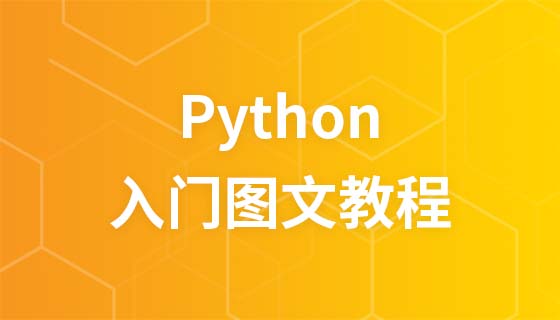python終止執行緒的方法:1、呼叫stop函數,並使用join函數來等待執行緒適當地退出;2、在python執行緒裡面raise一個Exception;3、用「thread.join」方式結束執行緒。

本文操作環境:windows7系統、python3.5版,DELL G3電腦。
我們知道,在python裡面要終止一個線程,常規的做法就是設定/檢查--->標誌或是鎖方式來實現的。
這種方式好不好呢?
應該是不大好的吧!因為在所有的程式語言裡面,突然地終止一個線程,這無論如何都不是一個好的設計模式。
同時
有些情況下更甚,例如:
簡單來說,就是我們一大群的線程共線了公共資源,你要其中一個線程“離場”,假如這個線程剛好佔用著資源,那麼強制讓其離開的結局就是資源被鎖死了,大家都拿不到了!怎麼樣是不是有點類似修仙類小說的情節!
知道為啥threading僅有start而沒有end不?
你看,線程一般用在網絡連接、釋放系統資源、dump流文件,這些都跟IO相關了,你突然關閉線程那這些
沒有合理地關閉怎麼辦?是不是就是給自己造bug呢?啊? !
因此這種事情中最重要的不是終止執行緒而是執行緒的清理啊。
一個比較nice的方式就是每個執行緒都帶一個退出請求標誌,在執行緒裡面間隔一定的時間來檢查一次,看是不是該自己離開了!
import threading class StoppableThread(threading.Thread): """Thread class with a stop() method. The thread itself has to check regularly for the stopped() condition.""" def __init__(self): super(StoppableThread, self).__init__() self._stop_event = threading.Event() def stop(self): self._stop_event.set() def stopped(self): return self._stop_event.is_set()
在這部分程式碼所示,當你想要退出執行緒的時候你應該顯示呼叫stop()函數,並且使用join()函數來等待執行緒適當地退出。線程應週期性地檢測停止標誌。
然而,還有一些使用場景中你真的需要kill掉一個線程:比如,當你封裝了一個外部庫,但是這個外部庫在長時間調用,因此你想中斷這個過程。
【推薦:python影片教學】
接下來的方案是允許在python線程裡面raise一個Exception(當然是有一些限制的)。
def _async_raise(tid, exctype):
'''Raises an exception in the threads with id tid'''
if not inspect.isclass(exctype):
raise TypeError("Only types can be raised (not instances)")
res = ctypes.pythonapi.PyThreadState_SetAsyncExc(tid,
ctypes.py_object(exctype))
if res == 0:
raise ValueError("invalid thread id")
elif res != 1:
# "if it returns a number greater than one, you're in trouble,
# and you should call it again with exc=NULL to revert the effect"
ctypes.pythonapi.PyThreadState_SetAsyncExc(tid, 0)
raise SystemError("PyThreadState_SetAsyncExc failed")
class ThreadWithExc(threading.Thread):
'''A thread class that supports raising exception in the thread from
another thread.
'''
def _get_my_tid(self):
"""determines this (self's) thread id
CAREFUL : this function is executed in the context of the caller
thread, to get the identity of the thread represented by this
instance.
"""
if not self.isAlive():
raise threading.ThreadError("the thread is not active")
# do we have it cached?
if hasattr(self, "_thread_id"):
return self._thread_id
# no, look for it in the _active dict
for tid, tobj in threading._active.items():
if tobj is self:
self._thread_id = tid
return tid
# TODO: in python 2.6, there's a simpler way to do : self.ident
raise AssertionError("could not determine the thread's id")
def raiseExc(self, exctype):
"""Raises the given exception type in the context of this thread.
If the thread is busy in a system call (time.sleep(),
socket.accept(), ...), the exception is simply ignored.
If you are sure that your exception should terminate the thread,
one way to ensure that it works is:
t = ThreadWithExc( ... )
...
t.raiseExc( SomeException )
while t.isAlive():
time.sleep( 0.1 )
t.raiseExc( SomeException )
If the exception is to be caught by the thread, you need a way to
check that your thread has caught it.
CAREFUL : this function is executed in the context of the
caller thread, to raise an excpetion in the context of the
thread represented by this instance.
"""
_async_raise( self._get_my_tid(), exctype )正如註釋裡面描述,這不是啥“靈丹妙藥”,因為,假如線程在python解釋器之外busy,這樣子的話終端異常就抓不到啦~
這個代碼的合理使用方式是:讓執行緒抓住一個特定的例外然後執行清理操作。這樣的話你就能終端一個任務並能適當地進行清除。
假如我們要做個啥事情,類似於中斷的方式,那麼我們就可以用thread.join方式。
join的原理就是依次检验线程池中的线程是否结束,没有结束就阻塞直到线程结束,如果结束则跳转执行下一个线程的join函数。 先看看这个: 1. 阻塞主进程,专注于执行多线程中的程序。 2. 多线程多join的情况下,依次执行各线程的join方法,前头一个结束了才能执行后面一个。 3. 无参数,则等待到该线程结束,才开始执行下一个线程的join。 4. 参数timeout为线程的阻塞时间,如 timeout=2 就是罩着这个线程2s 以后,就不管他了,继续执行下面的代码。
# coding: utf-8
# 多线程join
import threading, time
def doWaiting1():
print 'start waiting1: ' + time.strftime('%H:%M:%S') + "\n"
time.sleep(3)
print 'stop waiting1: ' + time.strftime('%H:%M:%S') + "\n"
def doWaiting2():
print 'start waiting2: ' + time.strftime('%H:%M:%S') + "\n"
time.sleep(8)
print 'stop waiting2: ', time.strftime('%H:%M:%S') + "\n"
tsk = []
thread1 = threading.Thread(target = doWaiting1)
thread1.start()
tsk.append(thread1)
thread2 = threading.Thread(target = doWaiting2)
thread2.start()
tsk.append(thread2)
print 'start join: ' + time.strftime('%H:%M:%S') + "\n"
for tt in tsk:
tt.join()
print 'end join: ' + time.strftime('%H:%M:%S') + "\n"預設join方式,也就是不帶參,阻塞模式,只有子執行緒運行完才運行其他的。
1、 兩個執行緒在同一時間開啟,join 函數執行。
2、waiting1 執行緒執行(等待)了3s 以後,結束。
3、waiting2 執行緒執行(等待)了8s 以後,運行結束。
4、join 函數(回到了主行程)執行結束。
這裡是預設的join方式,是在線程已經開始跑了之後,然後再join的,注意這點,join之後主線程就必須等子線程結束才會返回主線。
join的參數,也就是timeout參數,改為2,即join(2),那麼結果就是如下了:
join(2)就是:我給你子執行緒兩秒鐘,每個的2s鐘結束之後我就走,我不會有絲毫的顧慮!
#
以上是python如何終止線程的詳細內容。更多資訊請關注PHP中文網其他相關文章!



